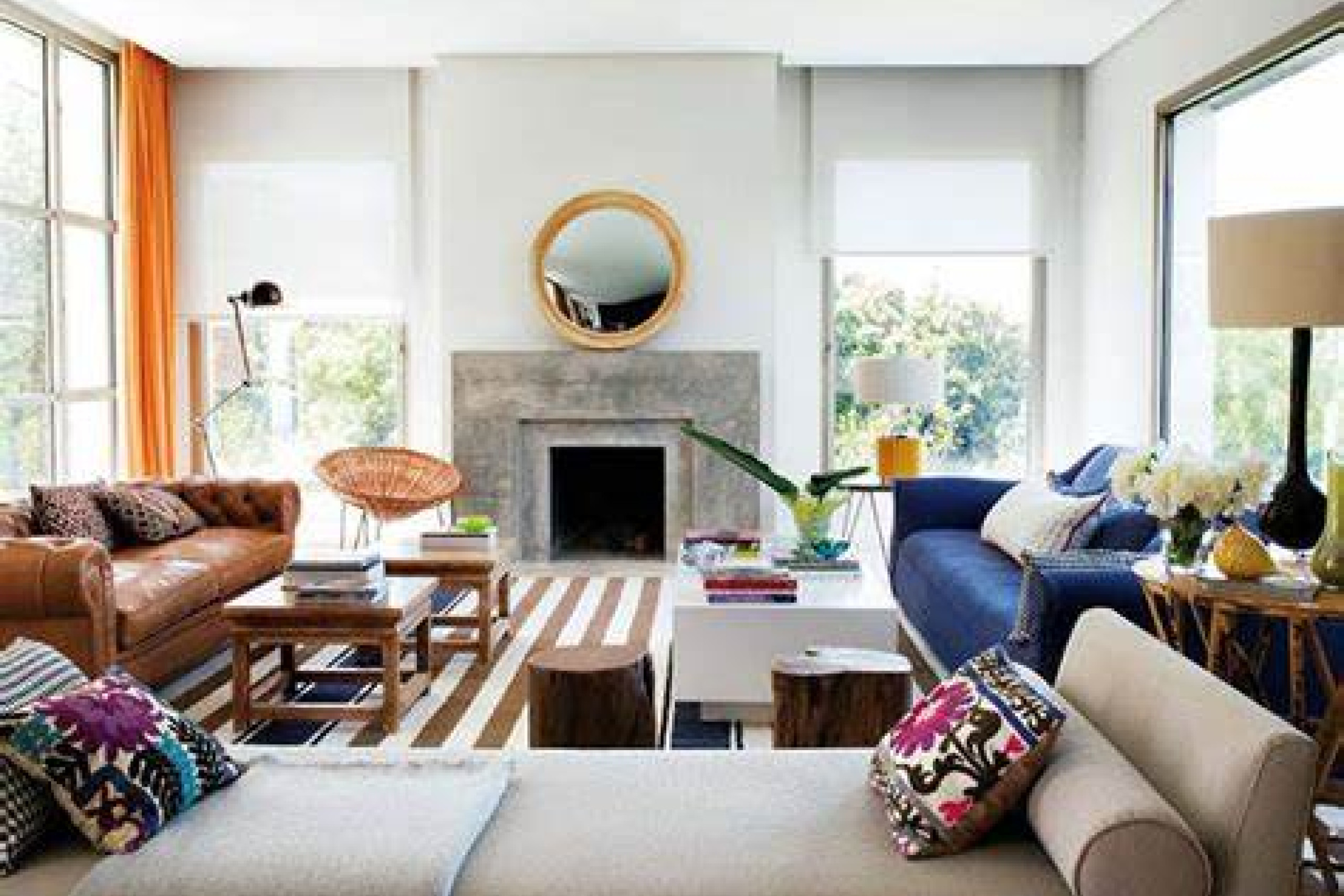19 Interior Design Styles

With so many styles of Interior Design, narrowing down your own can sometimes be tricky. Understanding which style you want to focus on is an important starting point to any project.

Modern
Modern interior design describes a very broad collection of design that incorporates technology, authenticity, efficiency and focuses on materials. Modernism was born in the 20th century and works to create a closer relationship between space and aesthetics. Overall, it focuses on functionalism, articulated lines, geometry and simplicity while creating visual impacts.

Mid-Century Modern
Mid-Century Modern interior design depicts a style that gained its momentum after the Second World War. This branch of modernism emphasizes the use of vivid colors, crips lines and interactive dialogues that integrate with nature and the outdoors.

Minimalist
Minimalist interior design sparked in the 60s and 70s and was inspired by tradition Japanese design and zen philosophies and practices. The idea is to strip things down to the bare basics. Minimalism presents its own aestethic that relies on the effectiveness on the design. There is virtually no clutter and emphasis on bold visual elements while leaving a lot of open space. Storage is usually concealed, color pallets are typically hushed and decor is typically at a minimum. The main focus is based on materials.

Scandinavian
Scandinavian interior design is similar to its modernist counterparts where it embodies the concept of simplicity, functionality and efficiency. It boasts qualities of minimalism and modernisms but ultimately introduces the use of organic materials, minimal ornamentation and clean dealing. The typical color schemes present shades of white, black, greens and blues.

Industrial
Industrial interior design is another form of modernism that focuses on the efficiency of functionality while using its working parts as the primary aesthetic. It features beams, columns, pipes, ducts and flanges used in the build as a design feature. It promotes a masculine undertone while featuring a worn, recycled and rough interior.

Contemporary
Contemporary interior design is often interchanged with modernism, however there are differences between the two categories. Contemporary styling echo trends and tastes based on the given time. Mainly, they borrow features from other modern sectors while mixing them and focusing on colors, lines, and elements with a focus on the aesthetic. Overall, they are meant to borrow multiple modern styles but create a warmer, cozy atmosphere.

Urbanism
Urbanism interior design relies on elements and design that bring a gritty vibe of Urban context inside. The style typically combines various patterns, materials, colors and features without the fear of mixing styles or being too bold. The mixture of styles makes it more interesting.

Traditional
Traditional interior design stems from European decor which uses the past for the future. Traditional interiors usually feature furniture and decor that are more ornate and detailed in its stylings, elaborate furniture, claw foot furniture and other features that come from the 18th century. Backdrops are usually pale and simple, with rich colors in the materials, furniture and decor to create a classical look. Dark wood furniture that is very detailed is a prominent feature of this style.

Transitional
Transitional interior design mixes traditional and contemporary modern styles. Although these styles are polar opposites, transitional design combines the best parts of both to create airy and cozy spaces. Typically this style features solid furniture that are larger, curved lines and a lack of ornamentation. The color palette is usually neutral or monochromatic.

Art Deco
Art Deco interior design is bold and very expressive. It becomes popular in the 1920s. It explores symmetry, lines and geometry while focusing on the design and composition. Angular pattens, layered designs, curves, and a mixture of aesthetic features through shiny chrome fittings, glossy paint, mirrored elements, etc are features of this style. Lighting is typically very distinctive in this style of design.

Country
Country styled interior design evokes warmth and is often traditional through English, French, Tuscan, Scandinavian styles. Wood, pottery, floral and plaid patterns are often found as a representation of this style. Ultimately, it promotes warmth, fluidity and balance.

Coastal
Coastal interior design focuses on fresh, relaxed, and versatile features. It takes aspects of organic elements like the ocean and the outdoors to inspire the concept. Natural light is used throughout this design as well as shades of blue.

Shabby Chic
Shabby Chic interior design rose from the 80s as an interpretation from traditional British aesthetics. Its goal is to create soft, feminine and visual statements. Spaces are light, airy, balanced and weathered which creates a romantic vibe. The color scheme usually reflects light neutrals and pastel colors. Vintage elements incorporated in the furniture and decor give the space a distressed look that softens the overall tone and space.

Eclectic
Eclectic interior design style is not afraid to break the rules. There is not set box for this style. It incorporates individuality and freedom. Features are borrowed from all styles and incorporated within the space. There is a lot of layering, however there is balance and rhythm therefore it does not become overwhelming.

Vintage
Vintage interior design pays homage to the 40s and 50s. Not everything that is old offers a vintage charm. Therefore, you have to be careful on what you choose to ensure your space does not look like a flea market. The goal is to create loving and warm spaces that have a ‘mix’ and ‘match’ aesthetic. Movement is an important design principle here that should play with contrast and composition through the use of patterns and motifs. Colors are typically light and neutral.

Zen
Zen interior design incorporates the traditional Japanese philosophy. This style is less occupied, making the focal point the silence and minimalism of the space. Each line, form and surface is placed carefully to ensure there is no frills and is well thought out. The material and color palette is predominantly organic with a mixture of woods, natural fibres and neutral colors.

Bohemian
Bohemian interior design features free spirited expression in its design. It is unique, contemporary, exuberant and vivid. Spaces are often busy, cheerful and flamboyant in tones, accessories, fabric and materials.

Tropical
Tropical interior design focuses on inspiration pulled from beaches, jungles and exotic lands. Ultimately, nature is the biggest push factor behind this design. Furniture is usually simple in its design and made from various woods. The color scheme is tropical in shades of orange, pinks, blues, and greens with neutral walls.

Rustic
Rustic interior design mixes simplicity and warmth while incorporating the outdoors. The color palettes vary with this style through dark shades of brown, whitewashed tones and neutral colors. Materials are often hand-crafted, salvaged or repurposed using wood, leather, wicker, iron or natural fibres. Stone and wood is the most notable material used throughout rustic designs.
Please note the photos for this article are taken from google. We do not own the rights to the photos.

